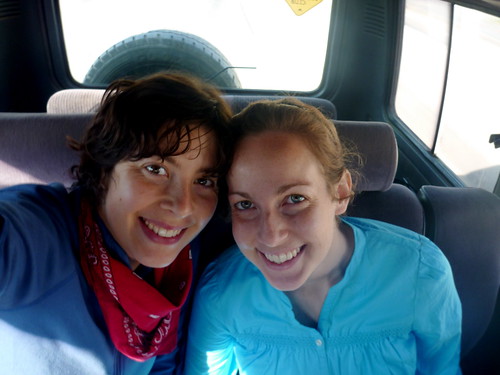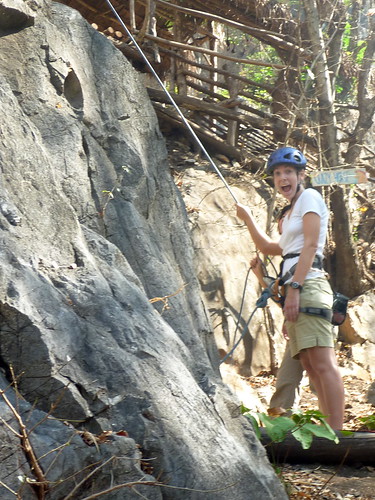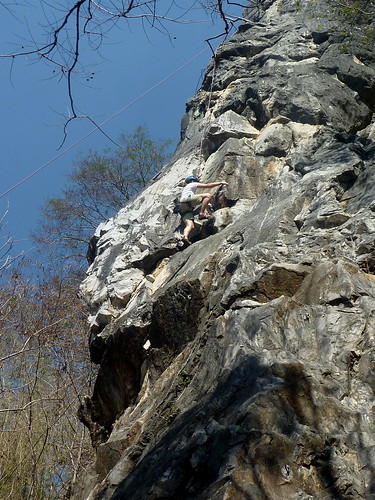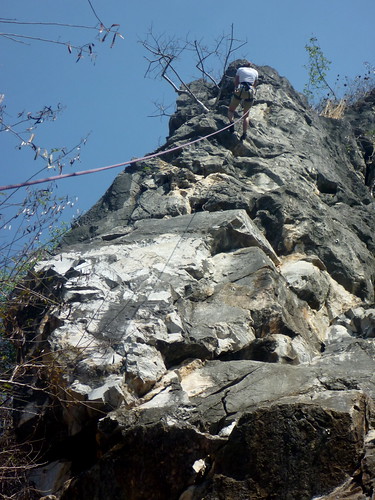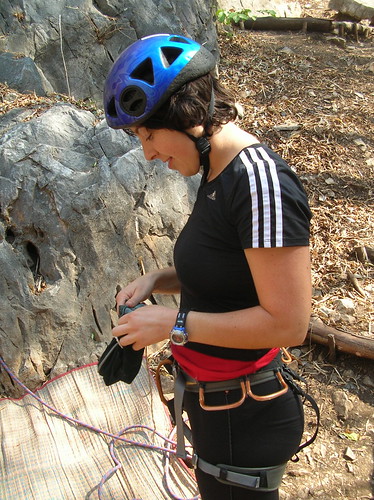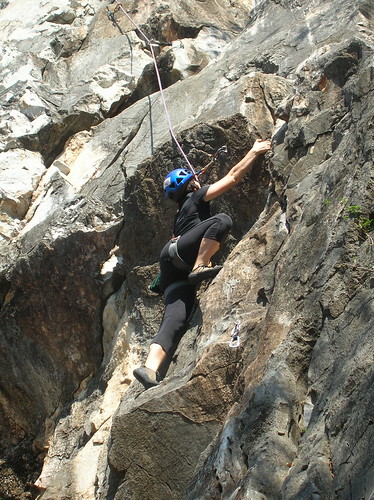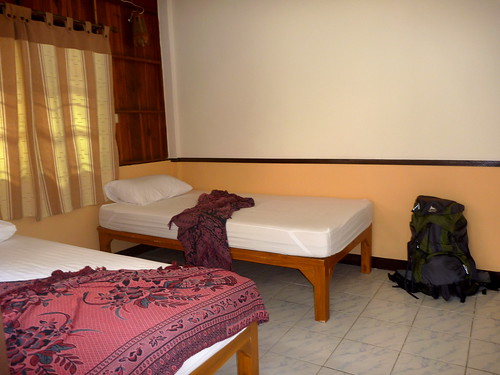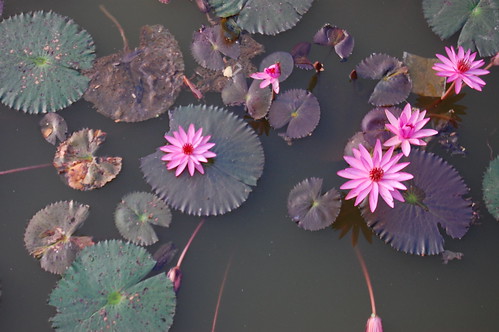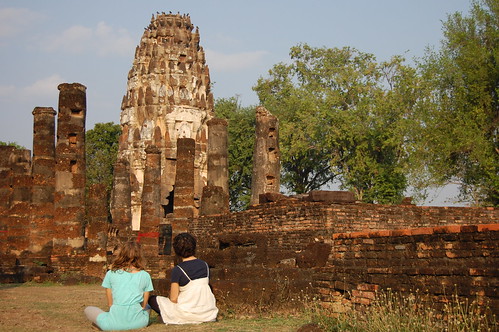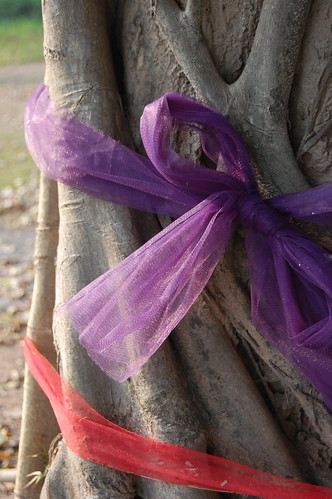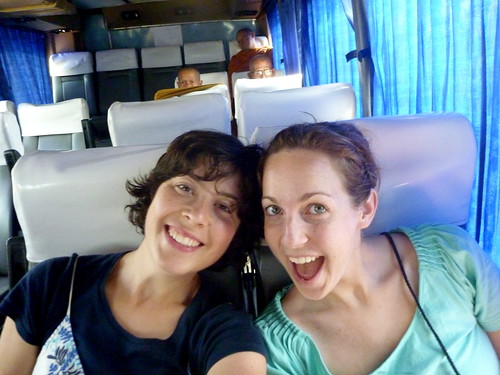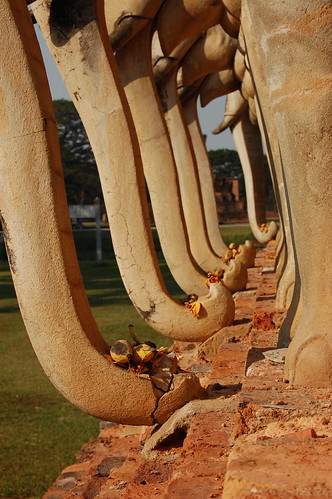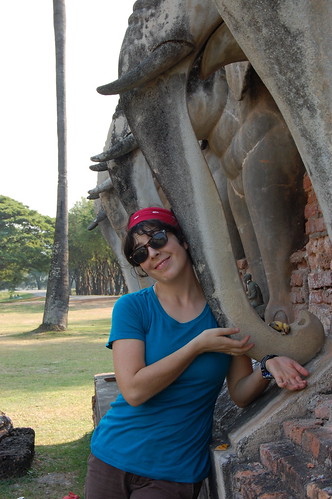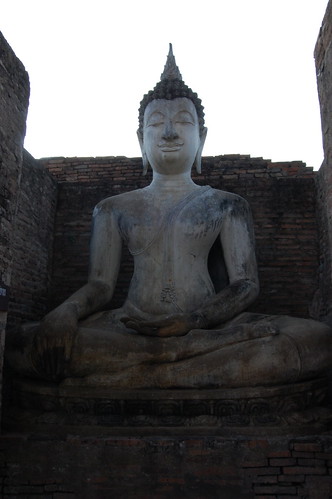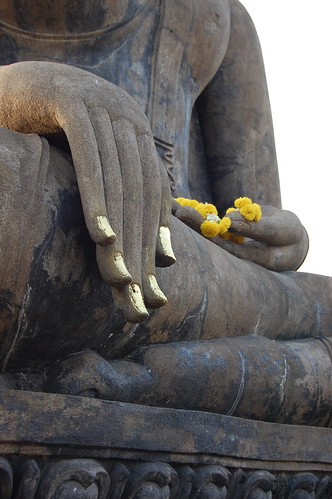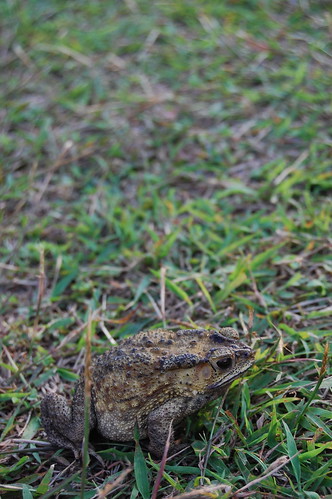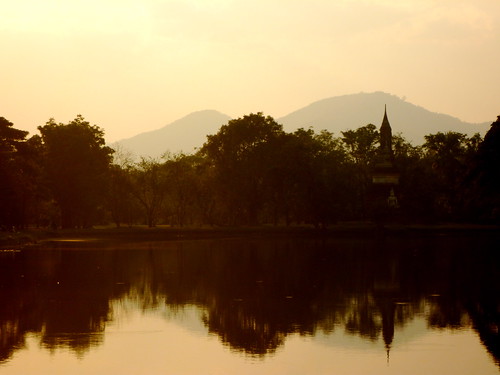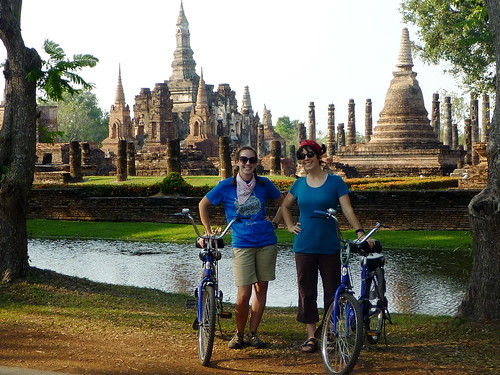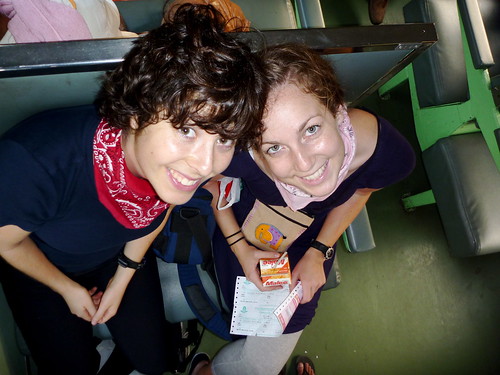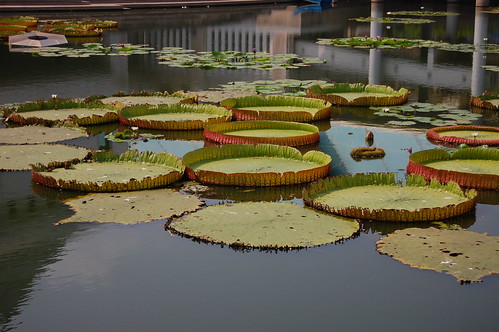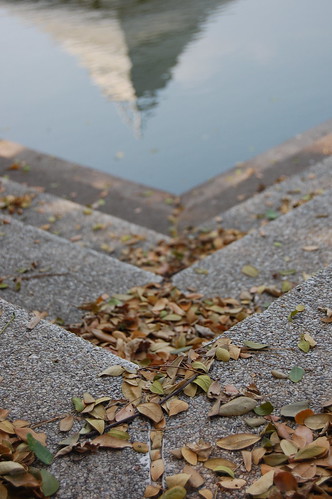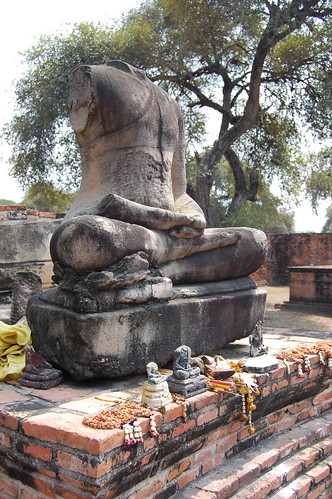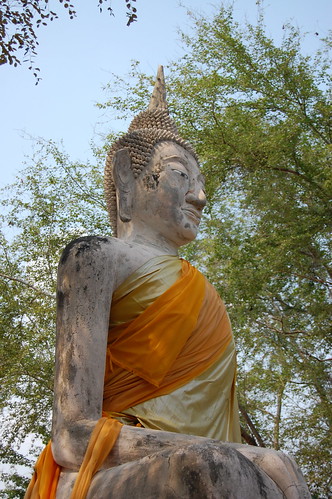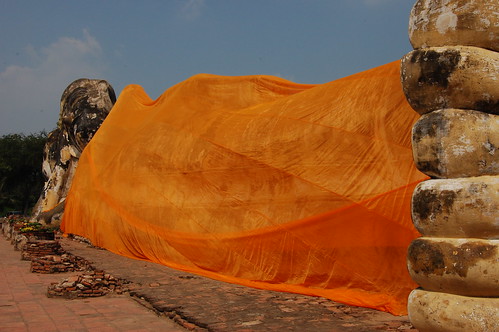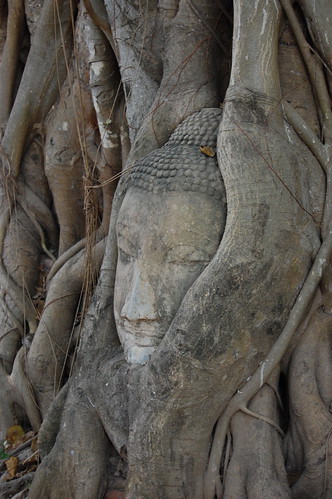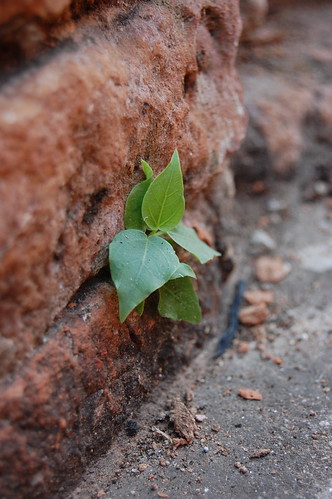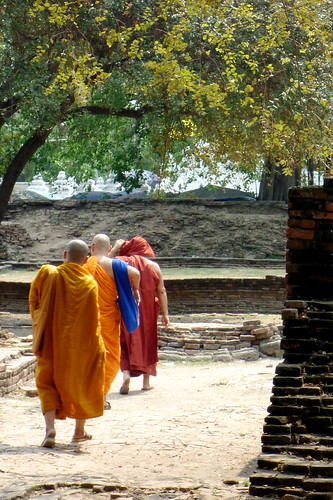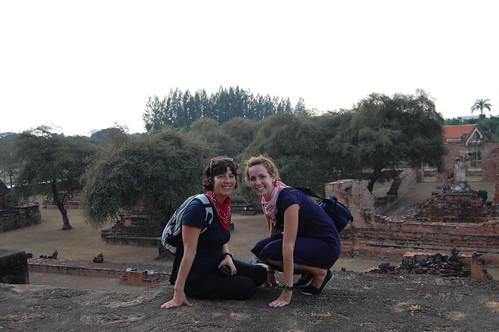And I want your commitment in writing.
Many visitors come to Thailand with “ride an elephant” on their tourist-to-do list. You can see elephants walking up and down the streets in the cities. You can hitch a ride on an elephant to explore the wats. You can watch an elephant show, take an elephant trek, and even purchase paintings made by the animals themselves. But please, don’t.
Let me explain.
While researching our trip, Molly and I discussed the opportunity for elephant riding. We both felt a little weird about the whole thing… but still harbored wistful ideas of sitting high atop the classic symbol of Thailand. After considering a few options, we decided to visit the Elephant Nature Park to get our elephant dose. I’m so thankful we did.
Traditionally in Thailand, elephants were employed in the logging industry (while a few performed sacred ceremonies). In 1990, Thailand banned logging in an effort to protect their dwindling rainforests. While this decision proved beneficial to the forests, it created an entirely new problem. What to do with the elephants?
Mahouts (elephant keepers) became creative in order to feed their elephants (and their families). Some mahouts engaged in illegal logging. Because illegal logging operations are constantly in danger of being discovered, the mahouts force the elephants to work quickly. Quicker than elephants are able to work. One technique is to hide amphetamines in the elephants’ fruit. As you can imagine, drug addicted elephants are not a good thing. But they exist.
Other mahouts use their elephants to beg in the streets of Bangkok or Chiang Mai. Because tourists are tourists… and often don’t realize the situation, they are easy targets. Mahouts solicit money from people for the opportunity to feed the elephants inadequate portions of bananas and other fruit. Although mahouts can make a lot of money this way, it’s torture for the elephant. Consider this. Elephants read vibrations in their feet. Vibrations that travel up throughout their entire body. Imagine the vibrations an elephant will feel walking up and down the busy streets of Bangkok. Then factor in the bright lights, loud noises, and drunk tourists (mahouts target bars). We learned on our visit to the Nature Park that many street begging elephants display similar symptoms to people (such as those who have autism) when they are overstimulated, like rocking back and forth. Street begging is now illegal in Bangkok, but it still happens. Thankfully, Molly and I didn’t see it.
Legally, elephants are able to work in the tourism industry. This is where elephant riding comes in. Tourists can book trekking tours or entertainment shows with countless companies. It might seem harmless… but think about it. Trekking elephants are asked to carry people and supplies on their backs without being given adequate time to rest. Our guide at the Nature Park gave us this example, “When you go out on a hike, your backpack doesn’t feel all that heavy… but after several kilometers it becomes a real pain.” Plus those benches people sit on, can actually deform and break an elephant’s back.
Ok… but this is the really terrible part. Have you ever thought about how these wild animals are tamed to the degree that they will let a human sit on their back? Part of our visit included the viewing of a documentary that shows elephant “training.” This isn’t the exact video, but it gives you an idea.
If like me, you couldn’t actually watch that entire video… I’ll quickly fill you in on the details of how it works. The elephant is lead into a small cage so it cannot move. Then, several people approach the elephant and beat it into submission. That’s pretty much it. Sophisticated techniques are used such as jamming a sharp hook into the elephants head. Poking the sensitive inner ear with metal spears. You know. Fun things like that. But when they’re done… there’s another rideable elephant! Woot!
Some good stuff now, please.
You have to know all of these horrible things to fully understand why the Elephant Nature Park is so out of this world fantastic.
But that I’ll tell you tomorrow. (with pictures!)
xo, jill
